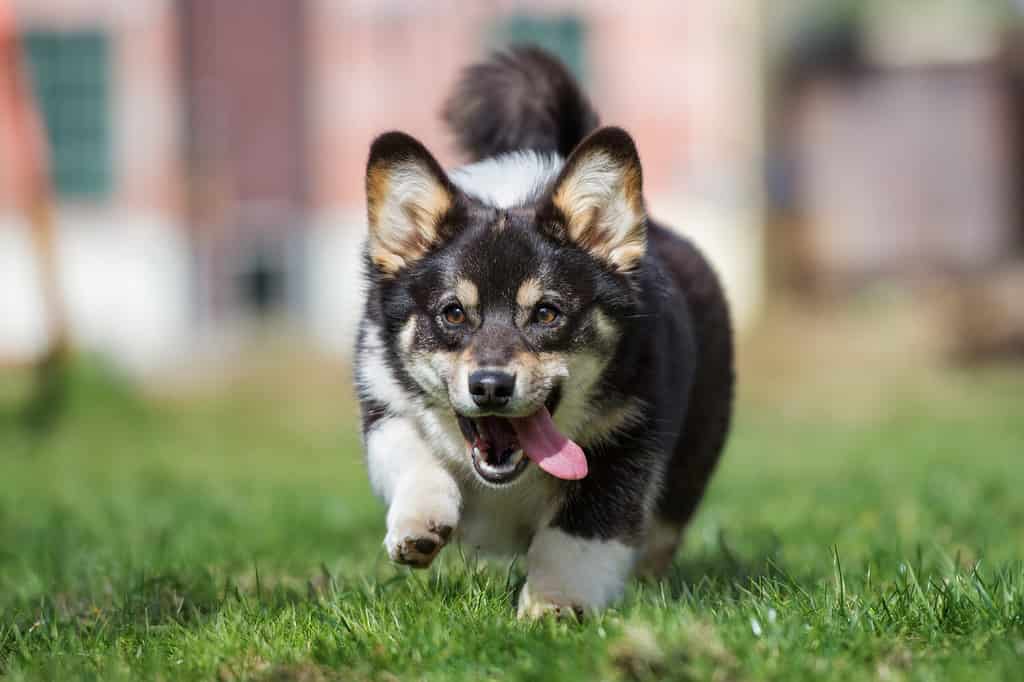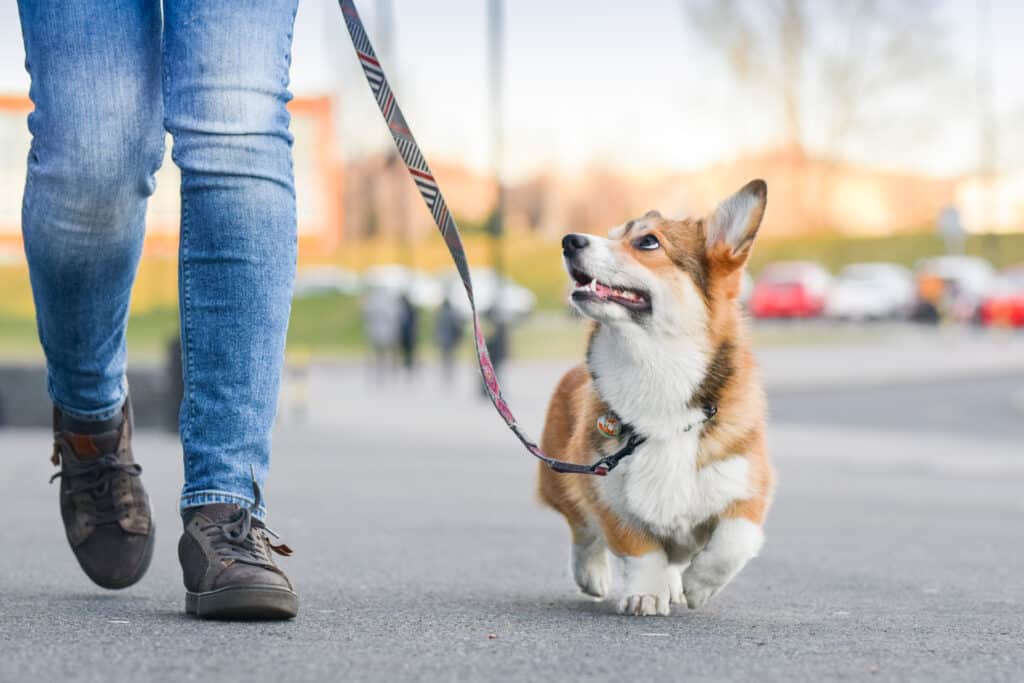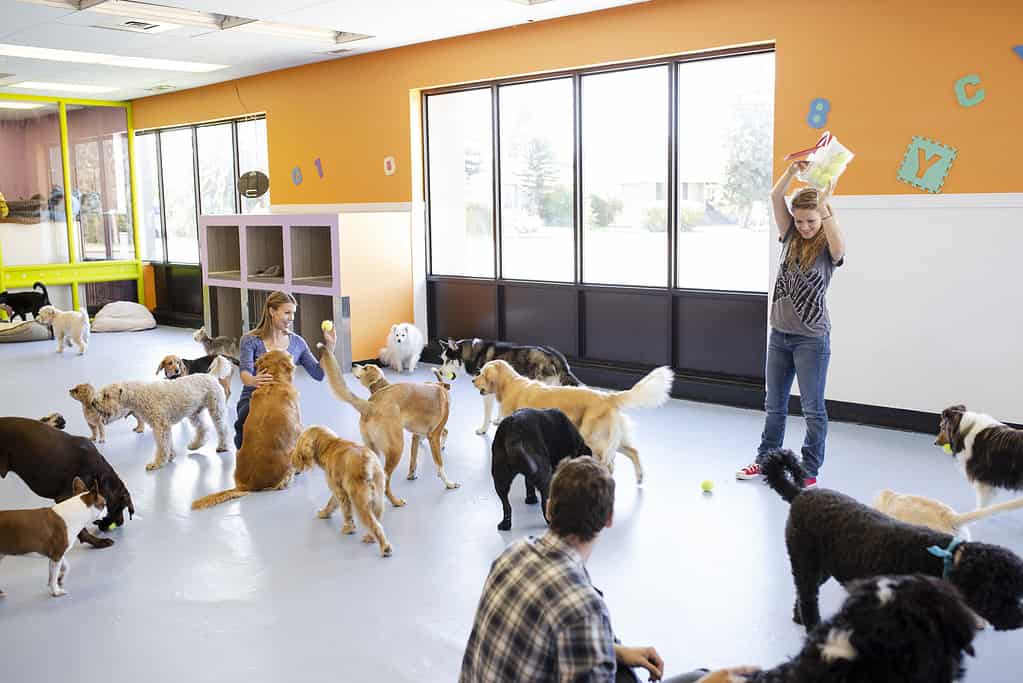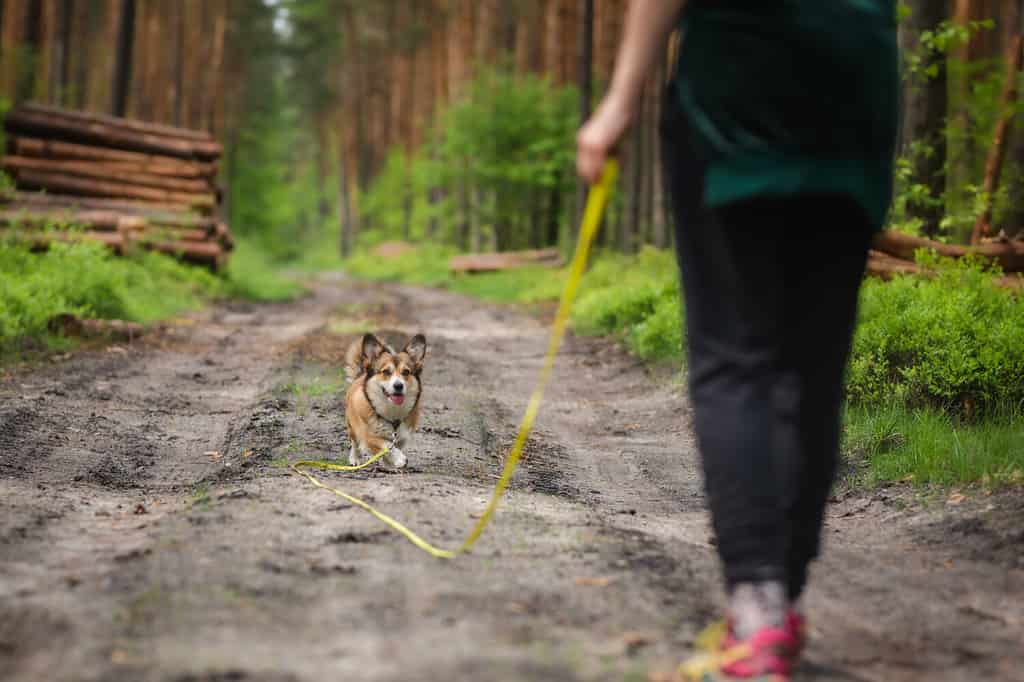Your family has recently grown by four paws, and you couldn’t be happier. But perhaps this is your first time owning a corgi — where do you even start? Whether you’re now a proud owner of a Cardigan Welsh corgi, a Pembroke Welsh corgi, or a corgi mix, there’s one thing you need to make a priority ASAP: learning to tire out your new pooch. Keep reading to understand the ins and outs of corgi exercise!
About Corgis: Our Beloved Loaves of Love
Corgis were voted among the top 20 most popular dog breeds last year, and it’s no surprise why. With short legs and comically long bodies, these walking bread loaves are undeniably cute. Furthermore, corgi puppies are even more awkwardly adorable, with their oversized ears perched upon their heads. However, these low-riding rovers aren’t just about looks — corgis were originally bred as cattle herders and barnyard dogs! Our beloved pint-sized pups can pack a real punch for herding.

Corgis are one of the most popular dog breeds.
©iStock.com/Nataba
How Much Exercise Does a Corgi Need?
When determining how much exercise your corgi needs, several factors must be considered. If your desired method of tiring out your pup revolves around being outdoors, how do you plan to keep up this activity during the frigid winter months? If you plan to supplement a traditional walking schedule with other activities, do you have the budget to explore more competitive dog sports? However, our pooch’s age and health are the most important items to consider.

There are many factors to consider when determining how much exercise your corgi needs.
©otsphoto/Shutterstock.com
Age
Juvenile and adult corgis may be ready to rip and tear, but puppies and senior dogs require closer supervision regarding exercise. Puppies can tire much more quickly than adult dogs and should be watched closely. Avoid unnecessary strain on their developing muscles and joints by limiting long-running and high-impact jumping. On the other hand, senior corgis require less exercise as they grow old. They may also need your support to stay active, such as supplements to aid their aging joints.
Health
Corgi breeds can experience a variety of health problems, such as hip dysplasia and hypothyroidism. Fortunately, many of these issues are uncommon and unlikely to appear later in life. Ensure your corgi gets regular veterinary care, and discuss any drastic changes to their exercise routine with your vet.
Where to Get Started With Exercise
Assuming your juvenile or adult corgi is in top health, your pooch will require at least 30 minutes of exercise daily. Some corgis are content to spend plenty of time snuggled up on the couch with their cherished owners. However, some corgis, who come from a stronger working background, may require more activity than just half an hour. Many corgis thrive if given “jobs” to do regularly, including physical exercise and mental stimulation.
Making the Most of Your Dog Walks
Because our beloved furry friends are highly energetic and intelligent, making the most of your dog walking routines is important. Firstly, don’t take your corgi on the same walk daily. While convenient for you, lacking variety on your dog’s walks is doing your pooch a terrible disservice. By walking in different directions and visiting diverse areas, your pup will be exposed to many sights, sounds, and smells. This provides your dog with both physical and mental enrichment.

Try to take your dog on different routes and visit various locations when walking your pooch.
©Jus_Ol/Shutterstock.com
Additionally, consider allowing your canine companion to take a sniffari! A sniffari is a walk, but it will enable your dog to decide which route they take and how long they stop to sniff. While you may spend more time on your walk or cover less distance, this tires out your dog just as quickly! Lastly, if the weather is not cooperating, consider loading your corgi up and heading to one of your favorite pet-friendly stores for a unique indoor walking experience.
Other Tail-Wagging (or Nub-Wiggling) Workouts for Your Corgi
Do you feel like going on a walk daily can be monotonous? Never fear — there are many ways to vary your dog’s exercise regimen! While a corgi’s short legs can make joining you on fast-paced sports such as biking excursions difficult, they’re still pawfect partners for various other dog sports. Why not bring your pooch along on your next hiking trip? Or consider taking up kayaking or standup paddleboarding! (Yes — corgis can swim!)

Corgis are very adaptable and enjoy lots of different activities.
©MOAimages/iStock via Getty Images
Lastly, the American Kennel Club (AKC) offers various dog sporting events, such as rat trials, obedience, rally obedience, agility, and herding trials. Much like border collies and Australian shepherds, corgis are excellent herding dogs and have been used to manage flocks of smaller fouls as well as herds of large cattle. Don’t have the space, budget, and time to own and care for barnyard animals? Check out these four best herding balls for dogs! They’re all the fun without the mess.
Fury Is a Furball: What Happens When a Corgi Doesn’t Get Enough Exercise
Insufficient exercise can lead to both behavioral problems and health concerns in corgis. In the short term, corgis lacking sufficient activity regularly will become bored and try to find other outlets to amuse themselves. This commonly leads to extreme hyperactivity, inappropriate chewing, anxiety, and even depression. In addition to becoming an annoyingly destructive pup, corgis who do not get regular exercise over long periods can eventually become obese and also experience shortened lifespans due to health issues related to inactivity.

Corgis can become destructive if they do not get enough exercise and mental stimulation.
©Rita_Kochmarjova/Shutterstock.com
Signs Your Pooch Is Getting Too Much Exercise
While your corgi may appear to be the Energizer Bunny, exercising your pooch too much is possible. When determining the appropriate amount of exercise for your furry friend, watch for signs of exhaustion during or after your walk or play. Additionally, be mindful of any limping or difficulty moving. Some more subtle signs of overexertion include changes in appetite or thirst. Lastly, if you notice your dog trailing behind on his regular walks or reluctant to head out the door with you, consider reducing the amount of exercise you provide your pup.

Exercise is important, but it can be a balancing act determining the amount of activity needed for your specific dog.
©Jus_Ol/Shutterstock.com
What If You Can’t Exercise Your Corgi Enough?
As much as we try to prioritize our furry friends, sometimes life gets in the way. Perhaps you’re running into an excessively busy time at work, or extenuating circumstances with a family member require more of your time. Whatever the reason, there are options to help ensure your pooch’s health and wellness don’t suffer!
- Professional Dog Walkers: If you’re working long hours, consider hiring a dog walker to take them for a mid-day walk.
- Doggy Daycare: Consider occasional playtime at a local, highly-rated doggy daycare for polite and social corgis.
- Enrichment Toys: There are many enrichment toys you can make yourself or buy to tire your dog out mentally and physically.

If your schedule becomes too chaotic to exercise your dog regularly, some options can help!
©iStock.com/Hero Images
Corgi Cardio Is Pawsitively Fun
Spending time with your corgi is a great way to bond with your pooch. Furthermore, focusing on exercise is great for your and Fido’s health and well-being. Whether you’re hitting the trails, paddling a lake, or herding some ducks, you and your corgi will have a great time. Now, get out there and get those fluffy nubbins wagging!

Exercising your corgi is fun for both of you and can help create a strong bond with your dog!
©Jus_Ol/Shutterstock.com
The photo featured at the top of this post is © Liudmila Bohush/Shutterstock.com
Ready to discover the top 10 cutest dog breeds in the entire world?
How about the fastest dogs, the largest dogs and those that are -- quite frankly -- just the kindest dogs on the planet? Each day, AZ Animals sends out lists just like this to our thousands of email subscribers. And the best part? It's FREE. Join today by entering your email below.
Thank you for reading! Have some feedback for us? Contact the AZ Animals editorial team.






